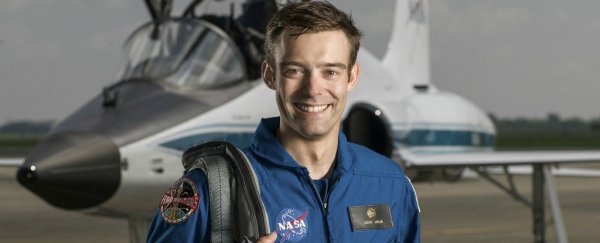After a year on the job, astronaut in training Robb Kulin has resigned from NASA's two year program - a decision that has only been made once before in the space agency's history.
Last summer, Kulin was ecstatic to find out that he was one of just 12 astronauts picked for the historic program - an incredible feat given there were 18,300-some applicants.
Incredibly humbled to join the @NASA family as one of 12 #NewAstronauts - THANK YOU to so many mentors, family & friends for your support! pic.twitter.com/miOxLwM5on
— Zena Cardman (@zenanaut) June 8, 2017
The 34-year-old grew up in Anchorage, Alaska, before studying mechanical engineering at the University of Denver. The Fulbright Scholar then followed up his bachelors with a master's in materials science and a doctorate in engineering.
Before being selected by NASA, Kulin was a senior manager for flight reliability at SpaceX.
Because SpaceX and Boeing are developing NASA's commercial crew capsules, due to launch within the next year, Kulin could very well have flown on a vehicle that he helped design at his last job.
He said that was something he was hoping for.
My old colleagues are getting ready for another launch! The Vandenberg launch site is an awesome place, and coincidentally both where I got my introduction to launch ops, and was the location of my final launch as the launch chief engineer. Good luck gang! #STEM #Engineering https://t.co/vV0DT4kFuB
— Robb Kulin (@Alaskan_Astro) February 22, 2018
It's still unclear exactly why Kulin has resigned from the program, but according to a NASA spokesperson, the departure is for "personal reasons".
The decision to resign has only been made once before, exactly 50 years ago.
On April 22 1968, scientist Brian T O'Leary withdrew from NASA's astronaut training program.
O'Leary was chosen as a scientist-astronaut by NASA in the summer of 1967, after completing a PhD at the University of Berkeley on the physical properties of the Martian surface.
Because of his expertise, NASA singled him out for a potential manned mission to Mars. But the following year, the mission was cancelled.
O'Leary resigned from the program shortly after the announcement because of a "lack of prospects for a spaceflight".
But that wasn't the end for O'Leary. After he resigned from NASA, he was asked by Carl Sagan himself to lecture at Cornell University - and no one says no to a job offer like that.
O'Leary soon found himself as a research associate and assistant professor of astronomy at Cornell, where he went from studying martian surfaces to lunar surfaces.
Between 1970 and 1971, he was the deputy team leader of the TV science team that covered NASA's Mariner 10 Venus-Mercury mission - a robotic space probe that was tasked with measuring the planets' environments, atmospheres, surfaces, and body characteristics.
Kulin's team received NASA's group achievement award for its participation.
This story of success just goes to show that leaving NASA isn't always the worst decision. So while this may be the end of the astronaut road for Kulin, that is no measure of his continued impact in space travel.
